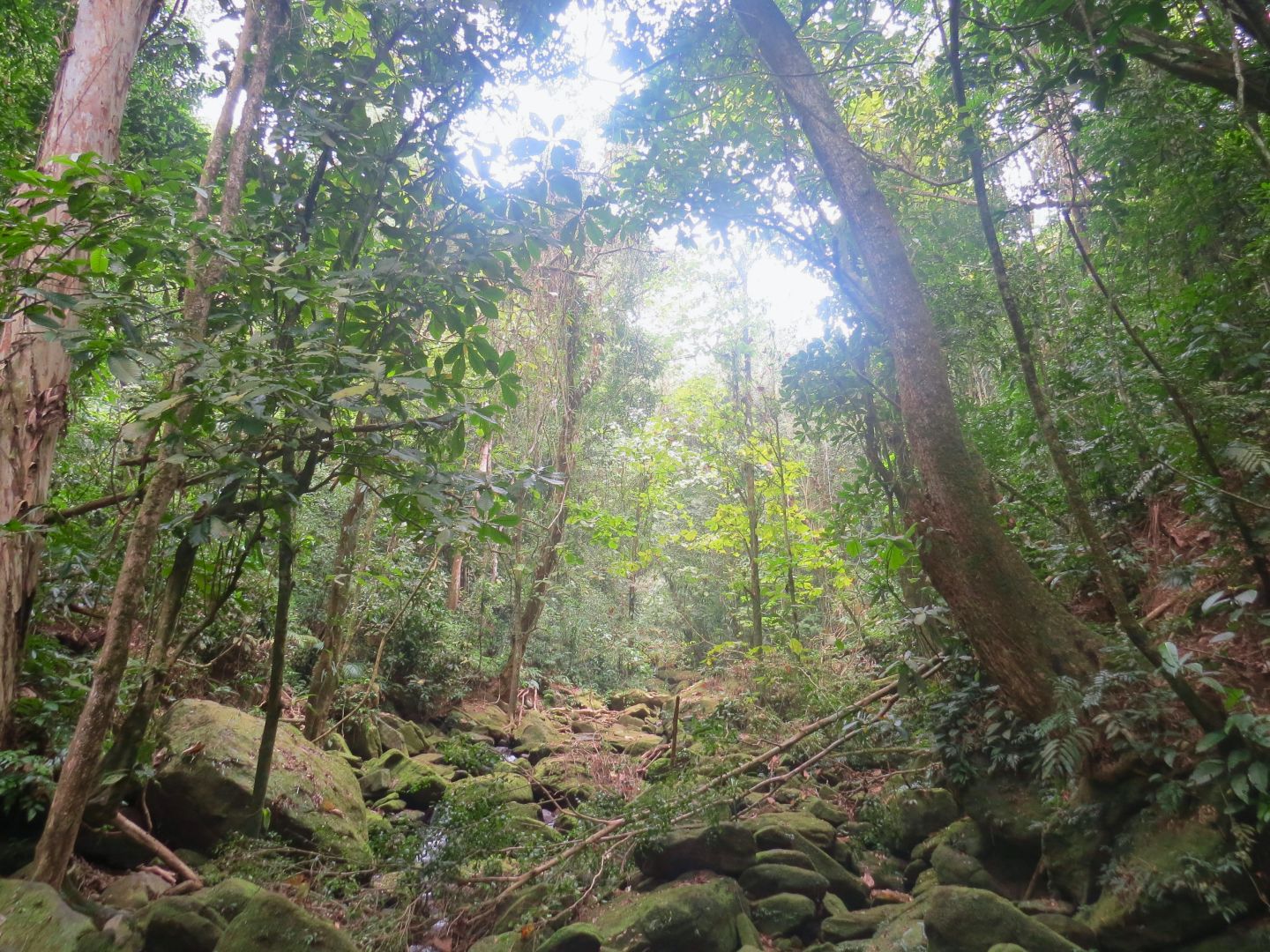DGR stands in strong solidarity with indigenous peoples worldwide. We acknowledge that they are victims of the largest genocide in human history, which is ongoing. Wherever indigenous cultures have not been completely destroyed or assimilated, they stand as relentless defenders of the landbases and natural communities which are there ancestral homes. They also provide living proof that not humans as a species are inherently destructive, but the societal structure based on large scale monoculture, endless energy consumption, accumulation of wealth and power for a few elites, human supremacy and patriarchy we call civilization.
This article originally appeared on Mongabay.
by Hyury Potter and Fabio Bispo on 17 March 2021 |
Translated by Claudia Horn
- The Amazônia Minada reporting project has revealed 1,265 pending requests to mine in Indigenous territories in Brazil, including restricted lands that are home to isolated tribes.
- Brazil’s federal agency for Indigenous affairs, Funai, holds 114 reports of isolated tribes, of which 43 are within Indigenous lands targeted by mining.
- In addition to the spread of diseases such as COVID-19 and malaria, mining activity poses health threats from the mercury used in gold extraction, which contaminates rivers and fish.
- Indigenous groups have filed a lawsuit with Brazil’s Supreme Federal Court against the government, demanding protection for isolated Indigenous peoples.
With much of the world under some kind of lockdown over the past year, working from home has become the default for many. But not for miners in Brazil, who have stepped up their efforts to start exploiting Indigenous territories in the Amazon, including areas that are home to isolated tribes.
Mining on demarcated Indigenous lands is prohibited under Brazil’s Constitution, but that didn’t stop miners from filing 143 requests last year, the highest number in 24 years, with the National Mining Agency (ANM). Of those requests, 71 are for areas where isolated Indigenous tribes live, according to data from Funai, the federal agency for Indigenous affairs. Indigenous activists and researchers warn that isolated groups have no contact with society and are highly vulnerable to any disease brought from outside.
In a lawsuit filed with the Supreme Federal Court last July, the Articulation of the Indigenous Peoples of Brazil (APIB) and eight political parties denounced illegal mining in areas of identified isolated peoples. They called on the federal government to adopt measures and avert what they called a “real risk of genocide” due to the COVID-19 pandemic. Yet even as the pandemic was entering its fifth month in Brazil, the lawsuit revealed the government had not implemented any protective measures in several areas that are home to isolated peoples.
The threat from mining, which can bring disease into rural forest areas, becomes tangible when considering the hundreds of requests from mining companies to operate on lands where isolated peoples live. Of the 114 reports of isolated peoples that Funai holds, 43 are within 26 Indigenous territories in the Amazon. These same territories are targeted by at least 1,265 requests for prospecting or mining activities, according to mapping data from the Amazônia Minada reporting project as of Jan. 29 this year.
“Isolated peoples have a strong connection with their environment,”
says Leonardo Lenin, who worked for 10 years with Funai’s unit for isolated ethnic groups, and who is currently executive secretary of the Observatory of Human Rights of Isolated Peoples and Recent Contact (OPI).
“Any invasion has a violent impact on their lives because the land is what guarantees their well-being,” he says.
Luísa Pontes Molina is an anthropologist who investigates illegal mining in the Indigenous Munduruku territories in the state of Pará. She warns of the health risks that mining poses to Indigenous peoples. In addition to spreading diseases such as malaria and COVID-19, mines harm the environment. Liquid mercury, used to bind gold particles, contaminates the rivers and fish that Indigenous communities depend on, according to a recent study by the Oswaldo Cruz Foundation (Fiocruz) and WWF Brazil. The study found traces of mercury in the entire population tested in the central region of the Tapajós River in Pará state, which includes the municipalities Itaituba and Trairão where the Munduruku people live.
Molina says there is evidence of isolated people living in the municipality of Jacareacanga, in southwest Pará, which have not been reported to Funai. That region is also the subject of 106 requests for gold mining that overlap with the protected Munduruku Indigenous Territory. Funai records at least one isolated Indigenous community in this area.
“Many communities of the Alto Tapajós have been reporting of and denouncing illegal mining and other crimes in the region since 2015. This also includes invasions near isolated groups. But despite these reports, Funai’s budget for inspection is cut more and more,” Molina says.
She adds she has tracked cases of illegal mining and public enforcement, and found that,
“in October 2020, just 2,000 reais [$345] were allocated toward monitoring and inspection in the region of Tapajós.” The study is still in progress, but preliminary findings suggest “state neglect in fighting illegal mining on indigenous lands,” Molina says.
The Amazônia Minada project, an initiative of the InfoAmazonia journalism outlet, cross-references the location of mining applications filed with ANM against demarcated Indigenous territories in the Amazon. Its Twitter feed, @amazonia_minada, tracks ANM processes in real time and tweets when a new mining application is filed within a protected area of the Amazon.
18 mining requests for restricted lands
Most of the mining requests are for land within demarcated territories where most of the Indigenous inhabitants have already made contact with the outside world but where some groups also live in isolation. But there are also 18 mining applications targeting four protected areas with the special classification “restricted,” which means they have been demarcated based on the presence only of isolated peoples.
Six of these requests were filed by the company Bemisa Holding, controlled by the Opportunity Group. Its owner, banker Daniel Dantas, was investigated for financial crimes and convicted in 2008 on bribery charges, but was acquitted in 2016 on a technicality. All six of Bemisa’s mining requests are for copper prospecting on Piripkura land in the state of Mato Grosso. Although the territory was declared restricted in September 2008, ANM in the preceding months still granted exploration permits for the company’s six applications, valid until 2012. On Jan. 19, 2021, the Piripkura land became the target of another application for gold mining, filed by the Miner Cooperative of Vale do Guaporé.
The isolated Piripkura people first made contact with the outside world in 1989, when Funai worker Jair Candor encountered two of the community members who had remained on their land after invasions by outsiders. Over the next three decades, there have been 14 contacts with these two individuals. According to Candor’s account in the documentary Piripkura, evidence of traces of their life in the area guarantees the sustained restriction of the land. Any sign of the pair’s track is photographed proof. All the material is kept secret so as not to reveal the location of the area; the two men are believed to be the last members of the Piripkura ethnic group.
Mining giant Vale, responsible for the two biggest mining-related disasters in Brazilian history, in Mariana and Brumadinho, requested access to the territory of the isolated Tanaru, in Rondônia state. Its application to mine platinum came in 2003, three years before the territory was officially declared restricted. However, the ANM system shows the company managed to unblock the application in 2018. There is no record of ANM’s approval of this application.
Last year, Vale announced to its shareholders that it would abandon all its mining applications within Indigenous lands, only to back down right after.
It has more than 200 active applications within Indigenous lands, 62 in areas where isolated peoples live. Two applications are in the land of the isolated Ituna/Itatá nation in southwest Pará, through the company Mineração Santarém Ltda.
Vale has denied having any active mining bids in the Tanaru and Ituna/Itatá territories, saying that the processes “are no longer pursued by the company since 1989.” Although ANM records show 200 applications on behalf of the group and its various ventures, Vale says “most of these processes were dropped by Vale itself, while pending approval by the ANM.” However, application number 886.223/2003 in the ANM registry, which intersects with the Tanaru Indigenous Territory, does not indicate Vale has given up on its request to mine there.
The Ituna/Itatá land spans 1,420 square kilometers (548 square miles), about the size of São Paulo, Brazil’s biggest city. It was declared restricted in 2011, following three decades during which Funai workers collected evidence of the presence of isolated indigenous peoples. However, the territory is a constant target of miners, landowners, ranchers and politicians. Zequinha Marinho, a senator from Pará, has even requested the end of the restricted status for the Ituna/Itatá Indigenous Territory through a legislative decree, saying there are no isolated tribes in the region according to “knowledge of the facts.”
In February 2020, an anthropologist linked to the administration of President Jair Bolsonaro was arrested for entering the Ituna/Itatá protected area without authorization. He had tried to block an intervention by the federal environmental agency, IBAMA, to remove cattle from the land. In November 2020, the Federal Public Ministry in Pará (MPF-PA) also recommended the suspension of an expedition by Funai. According to the agency, any entry into the area should only be allowed after the removal of invaders who had occupied the Indigenous land and who presented a threat to the life and security of public officials as well.
“You have to leave the Indigenous people in their territory, but that doesn’t happen. What we usually see is permissiveness from the state,”
says a Funai official who spoke on condition of anonymity.
“The Ituna/Itatá lands, for example, are being taken over by squatters. Precisely because they are isolated, these people will not be vaccinated. The precaution with them must be permanent in regard to COVID-19 and any other disease that a miner or squatter can transmit,” the official says.
Denialism and indifference
In July 2020, when Indigenous organizations were already counting nearly 400 Indigenous victims of COVID-19, APIB and eight parties filed a lawsuit with the Supreme Federal Court to force the government to protect Indigenous peoples. Justice Luís Roberto Barroso ordered emergency “situation room” meetings: one for Indigenous peoples and another specifically to monitor regions of isolated peoples and peoples of recent contact.
The meeting on measures for isolated peoples was coordinated by the Institutional Security Cabinet (GSI) of the president’s office, and denounce as “mild” by Beto Marubo, a representative of APIB and leader of the Union of Indigenous Peoples of the Javari Valley (Univaja).
“By calling on the Supreme Federal Court, we hoped to end the denialism of the Bolsonaro government, but it is clear that this has not happened and will not happen,” Marubo said. “The situation room meetings are coordinated by GSI members who have no idea how to protect an isolated Indigenous community. In practice, they are indifferent.”
At the end of July, with Brazil on track for the most COVID-19 deaths after only the U.S., the GSI admitted in a petition to the court that eight Indigenous lands did not have any kind of barrier to prevent people from entering. Three of them are home to isolated peoples: Alto Rio Negro (in Amazonas state), Alto Turiaçu (Maranhão), and Enawenê Nawê (Mato Grosso).
Eight months since APIB filed its lawsuit with the court, and with the COVID-19 death toll among Brazil’s Indigenous people at more than 1,000, the Bolsonaro government has presented no protection plans that Indigenous organizations, medical experts from Fiocruz, and other associations have been able to approve. Three versions have been rejected by Justice Barroso, and a fourth is under consideration.
Indigenous rights activists warn the scenario may only get worse, citing a bill proposed by the Bolsonaro administration that aims to allow mining activity on Indigenous lands. This bill, known as 191/2020 , was shelved last year by Rodrigo Maia, the speaker of the lower house of Congress at the time. But there are fears that it will be revived under the newly inaugurated speaker, Arthur Lira, whose campaign was supported by Bolsonaro.
On Feb. 15, Bolsonaro told supporters and the press during an event in São Francisco do Sul, Santa Catarina state, that “we have to regularize” the exploitation of Indigenous lands. He said it would be “very good because Indigenous people are no longer people who are living isolated, but they are integrating more and more into society.”
That same day, Mongabay requested clarification from the federal agencies ANM, Funai and GSI; as well as from Bemisa Holding. We received no responses from any of them by the time this report was originally published in Portuguese.
UPDATE
On February 15, we asked for a response from Bemisa on the processes mentioned in the report, but there was no feedback. After the publication of this article on March 17, the mining company wrote to Mongabay and informed that in 2011 it asked to waive the six requirements at Piripkura Indigenous Land, in Mato Grosso state. However, all processes are still active in the ANM system and on behalf of Bemisa.
This report is part of Amazônia Minada, a special project of InfoAmazonia with support from the Rainforest Journalism Fund/Pulitzer Center.
This story was first reported by Mongabay’s Brazil team and published here on our Brazil site on March 2, 2021.


![The Green Flame Podcast: Protect Thacker Pass [Dispatches from Thacker Pass]](https://dgrnewsservice.org/wp-content/uploads/sites/18/2021/01/green-flame-news-service.jpg)




